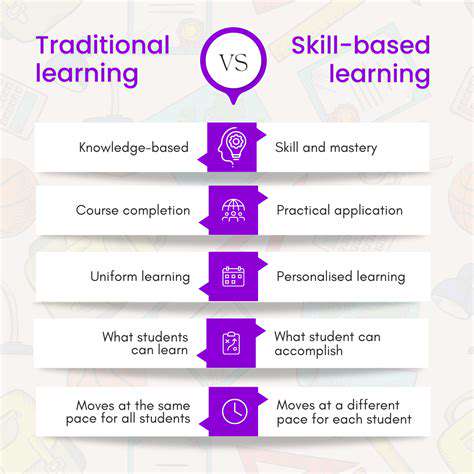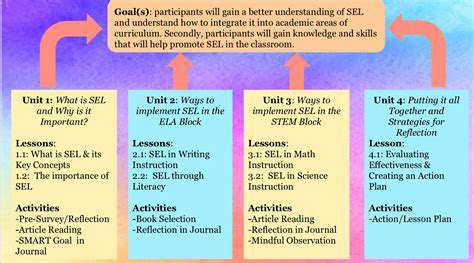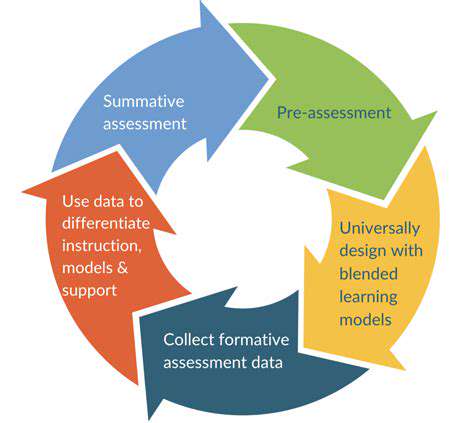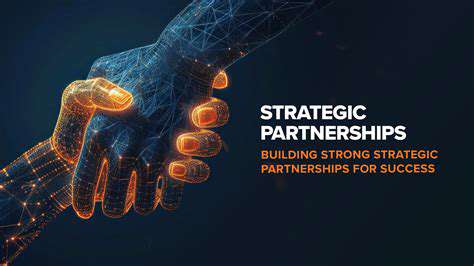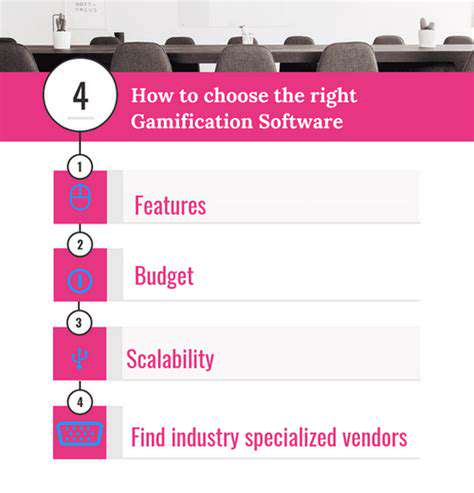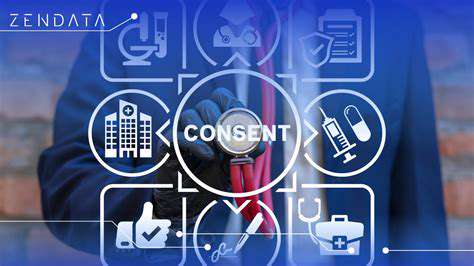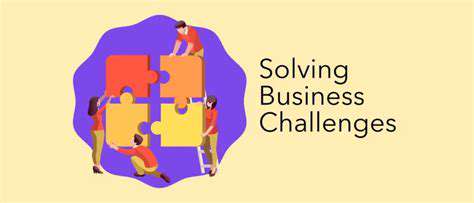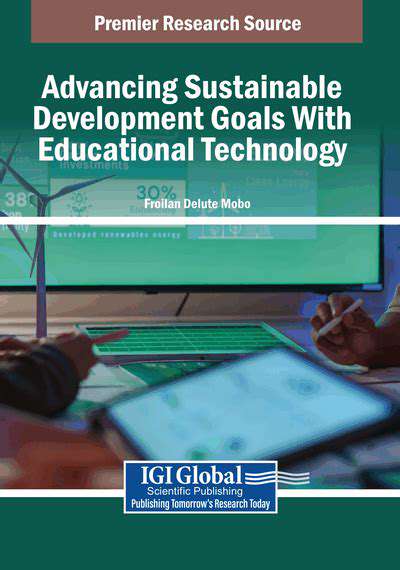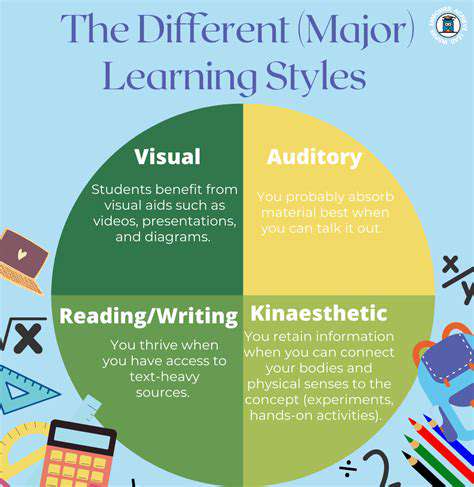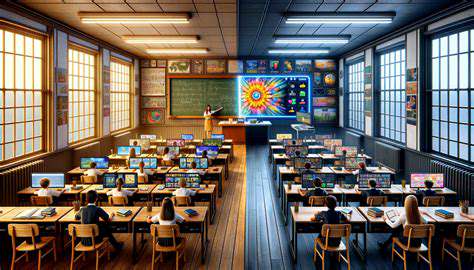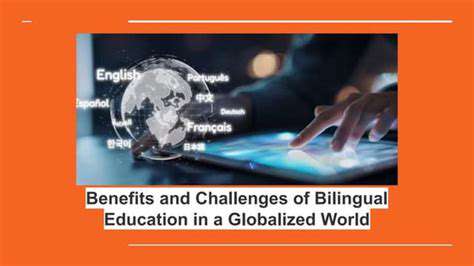From Pace to Path: The Dimensions of Personalized Learning

Understanding Individual Learning Styles
Recognizing that each learner possesses a unique learning style is paramount to effective pacing. Some individuals thrive on consistent, structured routines, absorbing information incrementally. Others flourish with bursts of intense focus followed by periods of rest and exploration. Understanding these differences allows educators and learners to tailor approaches to optimize comprehension and retention. This personalized approach acknowledges the diversity in how people absorb and process knowledge, fostering a more inclusive and effective learning environment.
Furthermore, recognizing individual learning styles involves acknowledging diverse cognitive preferences. Visual learners might benefit from diagrams and charts, while auditory learners might find lectures and discussions more engaging. Tactile learners often prefer hands-on activities and experiments. By acknowledging these various learning styles, educators can create a more enriching and effective learning experience for all students.
Optimizing Learning Through Breaks and Pauses
Integrating strategic breaks into the learning process is crucial for maintaining focus and preventing burnout. Short, frequent breaks can significantly improve concentration and memory. These breaks allow the mind to rest and recharge, returning to the task with renewed energy and clarity. Regular pauses can enhance both short-term and long-term learning retention by preventing mental fatigue.
Moreover, the integration of varied activities during breaks can further enhance engagement. A change in scenery, a brief physical activity, or a simple conversation can rejuvenate the mind and prepare it for the next learning segment. This approach not only promotes focus but also enhances overall well-being, facilitating a more positive learning experience.
Creating a Supportive Learning Environment
A supportive learning environment plays a pivotal role in fostering a pace that aligns with individual needs. When learners feel safe, respected, and encouraged to ask questions, they are more likely to engage actively with the material at a pace that suits them best. This sense of security and encouragement allows learners to take calculated risks and explore different learning approaches without fear of judgment.
Furthermore, constructive feedback and encouragement from educators can significantly impact a learner's motivation. Positive reinforcement and support can help learners stay engaged and motivated to continue learning at a pace that is comfortable and effective for them. This creates a supportive atmosphere where learners feel empowered to manage their own learning journey.
Adapting Strategies for Varied Needs
Recognizing that learners have diverse needs and learning styles is crucial for effective pacing. Students with learning differences, for example, may require modified pacing strategies to ensure optimal comprehension and engagement. These modifications can include providing extra time, using visual aids, or offering alternative learning resources to cater to individual needs.
Additionally, educators need to be flexible and adaptable in their teaching methods. This may involve using different teaching materials, varying the complexity of tasks, or adjusting the pace of instruction to accommodate individual needs. This flexibility allows for a more inclusive and effective learning experience for all students.
Monitoring Progress and Adjusting as Needed
Regular monitoring of learner progress is essential for adjusting pacing strategies as needed. This involves assessing comprehension, identifying areas of difficulty, and making adjustments to the learning path. By actively monitoring progress, educators can ensure that learners are challenged appropriately and that their pace is supportive of their individual needs.
Furthermore, open communication with learners is crucial. Encouraging learners to reflect on their own progress and identify areas where they need more support is vital. This collaborative approach allows for a dynamic exchange of information, enabling both educators and learners to refine the learning pace to best suit the individual needs of the learner.
Cell-free systems represent a groundbreaking approach in biological research, offering a powerful alternative to traditional cellular systems. These systems essentially isolate the essential components of a biological process, such as enzymes and substrates, from the complex cellular environment. This isolation allows researchers to study the process in a controlled and simplified manner, enabling a deeper understanding of its mechanistic details and potential applications. By removing the extraneous cellular machinery, researchers gain a clearer view of the specific interactions between molecules, which can be crucial for developing new therapies and biotechnological advancements.
Content Tailored to Individual Needs and Interests
Personalized Learning Experiences
Tailored learning experiences go beyond simply adapting content to individual needs. They actively engage learners by focusing on their unique learning styles, preferred methods of acquiring knowledge, and individual interests. This personalized approach fosters a deeper understanding and a more meaningful connection to the material, ultimately leading to greater motivation and retention. By acknowledging and addressing the diverse learning preferences within a group, educators can create a dynamic learning environment where every student feels supported and empowered to reach their full potential.
This personalized approach extends beyond just adjusting the pace of learning. It involves understanding the individual's strengths and weaknesses, learning preferences, and even their intrinsic motivations. By recognizing these factors, educators can design learning pathways that are not only effective but also enjoyable and engaging.
Adaptable Learning Pathways
From Pace to Path emphasizes the importance of adaptable learning pathways. This means that the learning journey is not a one-size-fits-all experience. Instead, it's a dynamic process that adjusts to the student's progress and evolving needs. Learners can explore various learning materials at their own pace, revisit concepts as needed, and delve deeper into areas that spark their curiosity. This flexibility empowers learners to take ownership of their education and develop a deeper understanding of the subject matter.
Dynamic Content Delivery
A key component of personalized learning is dynamic content delivery. This approach recognizes that different learners absorb information in various ways. Some thrive on visual aids, while others prefer hands-on activities or interactive simulations. Dynamic content delivery adapts to these differences, offering a variety of learning formats to cater to diverse learning styles. This can include videos, interactive exercises, simulations, and even gamified learning experiences.
By offering various learning formats and allowing learners to choose the ones that resonate most with them, dynamic content delivery ensures that the learning experience is engaging and effective for everyone.
Cultivating Intrinsic Motivation
Personalized learning isn't just about adapting content; it's about fostering a love of learning. By tailoring the learning experience to individual needs and interests, educators can cultivate intrinsic motivation. When learners feel that the material is relevant to their goals and passions, they are more likely to engage actively and persevere through challenges. This intrinsic motivation leads to a deeper understanding, a greater sense of accomplishment, and a lifelong love of learning, which is the ultimate goal of any educational endeavor.
Cultivating Student Agency: The Heart of Personalized Learning
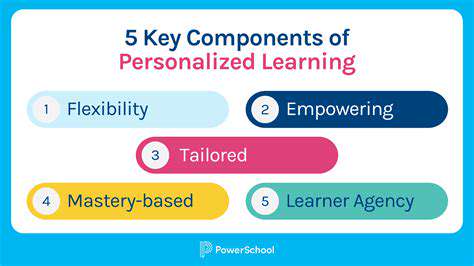
Cultivating a Growth Mindset
Developing a growth mindset is crucial for fostering student agency. Students with a growth mindset believe that their abilities and intelligence can be developed through dedication and hard work. This belief system is essential for embracing challenges and persevering through setbacks, both vital components of taking ownership of their learning. By emphasizing the process of learning over solely the outcome, educators can empower students to see their potential as limitless. Encouraging students to embrace mistakes as learning opportunities is also key.
Creating Opportunities for Choice
Giving students choices empowers them to take ownership of their learning journey. This could involve allowing students to select projects, topics, or methods of presentation. Offering a variety of options, while still maintaining clear learning objectives, allows students to explore their interests and develop their unique skills. By providing choices, students feel a sense of control over their education, which is a fundamental aspect of agency. This approach fosters a deeper engagement in the learning process.
Promoting Collaboration and Communication
Fostering collaborative learning environments provides students with opportunities to share ideas, learn from peers, and develop their communication skills. Collaborative projects encourage students to actively participate in shaping their learning experiences. Group work allows students to learn from diverse perspectives and contribute to a shared understanding, promoting mutual respect and effective communication.
Encouraging constructive feedback and active listening skills is vital in these collaborative settings. These skills are crucial for navigating complex social interactions and for contributing effectively to a group effort.
Establishing Clear Expectations and Feedback
Clear expectations, both for individual and group work, are essential to fostering student agency. When students understand the criteria for success, they can better direct their efforts and assess their own progress. Transparent grading rubrics and regular, constructive feedback help students understand where they stand and how to improve. This fosters a sense of responsibility and allows students to take ownership of their learning path.
Providing Resources and Support
Providing students with the necessary resources and support is vital for fostering student agency. This includes access to information, technology, and mentorship opportunities. Access to a variety of resources allows students to explore different avenues for learning and develop their own unique approaches to problem-solving. Mentorship from teachers or older students can provide guidance and support, fostering a sense of belonging and empowerment.
Encouraging Self-Reflection and Goal Setting
Regular opportunities for self-reflection and goal setting are key elements of cultivating student agency. These opportunities allow students to evaluate their progress, identify areas for improvement, and set personal learning goals. By reflecting on their learning experiences, students gain a deeper understanding of their strengths and weaknesses, thereby enhancing their ability to manage their own learning. This self-awareness is essential for taking ownership of their educational journey.
Read more about From Pace to Path: The Dimensions of Personalized Learning
Hot Recommendations
- The Gamified Parent Teacher Conference: Engaging Stakeholders
- Gamification in Education: Making Learning Irresistibly Fun
- The Future of School Libraries: AI for Personalized Recommendations
- EdTech and the Future of Creative Industries
- Empowering Student Choice: The Core of Personalized Learning
- Building Community in a Hybrid Learning Setting
- VR for Special Education: Tailored Immersive Experiences
- Measuring the True Value of EdTech: Beyond Adoption Rates
- Addressing Digital Divide in AI Educational Access
- Preparing the Workforce for AI Integration in Their Careers
